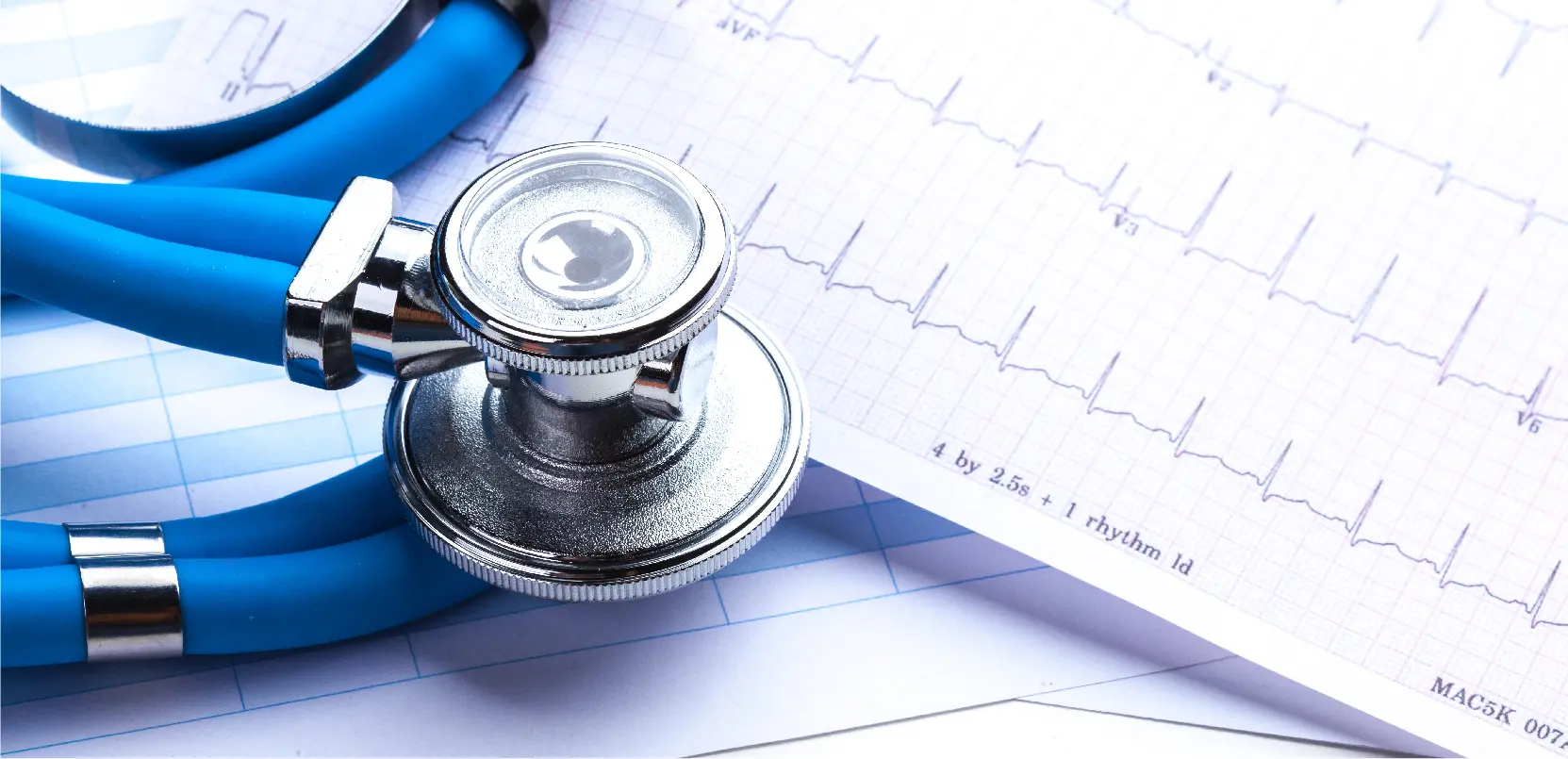

Have you ever wondered what the squiggly lines on an ECG mean and how doctors use them to decipher our heart health? Whether you’re a healthcare student, a practicing nurse, or simply a curious mind, learning to read an electrocardiogram (ECG) can initially seem tough. But fear not! This introductory guide is not just a resource, it’s a journey that will take you from a novice to a near-pro in understanding and interpreting these vital signals of life.
This guide will walk you through each aspect of an ECG, from the basic elements to the subtle nuances that can indicate major health issues. Ready to learn how to decode your heart’s electrical messages? Let’s get started.
ECG is an abbreviation for Electrocardiogram; basically, it is a medical test that detects cardiac (heart) abnormalities by measuring the heart’s electrical activity over time. Think of it as an electrical map that shows how your heart is functioning.
Each heartbeat is triggered by an electrical impulse normally generated by special cells in the upper right chamber. An ECG records these impulses to show how fast your heart is beating, the rhythm of your heartbeats (whether steady or irregular), and the strength and timing of the electrical impulses as they travel through your heart.
During the test, small electrode patches are attached to the skin of your chest, arms, and legs. These electrodes are connected to an ECG machine by lead wires. The heart’s electrical signals are then translated into waveforms, which are usually printed on paper for the doctor to interpret.
Intervals represent the time it takes for electrical signals to travel through different parts of the heart. Key intervals include:
PR Interval:
QRS Interval
QT Interval
Segments are isoelectric sections of the ECG tracing, meaning there’s no significant electrical activity happening. Key segments include:
PR Segment
ST Segment
To understand an ECG, start by familiarizing yourself with the ECG paper. It’s a graph with small and large squares. Each small square represents 0.04 seconds in time, while a large square (made up of 5 small ones) represents 0.20 seconds.
ECG reading follows a systematic approach. First, calculate the heart rate. For regular rhythms, find a QRS complex on a dark line and count the large squares until the next QRS. Divide 300 by that number for the approximate heart rate.
Irregular rhythms require counting the QRS complexes within a 6-second strip and multiplying by 10. Next, assess rhythm. Normal sinus rhythm has regular intervals and a P wave before every QRS complex. Deviations suggest arrhythmias. Check the axis for normal orientation, as abnormalities may indicate cardiac issues.
Carefully examine the ECG’s waves, intervals, and segments. Analyze the P wave’s shape and duration, the PR interval (120-200 ms), the QRS complex (under 120 ms), and the QT interval (needs a heart-rate correction). The ST segment’s position is vital. Look for signs of hypertrophy (enlarged heart chambers) and myocardial infarction (heart attack). Remember, clinical context is crucial when interpreting an ECG.
The ECG is a powerful and accessible tool that reveals the heart’s intricate electrical story. While doctors hold specialized knowledge for precise diagnosis, this guide has empowered you with valuable insights into these fascinating squiggly lines. Practice and further resources can continue your journey to ECG proficiency!
Talk to an Expert Now